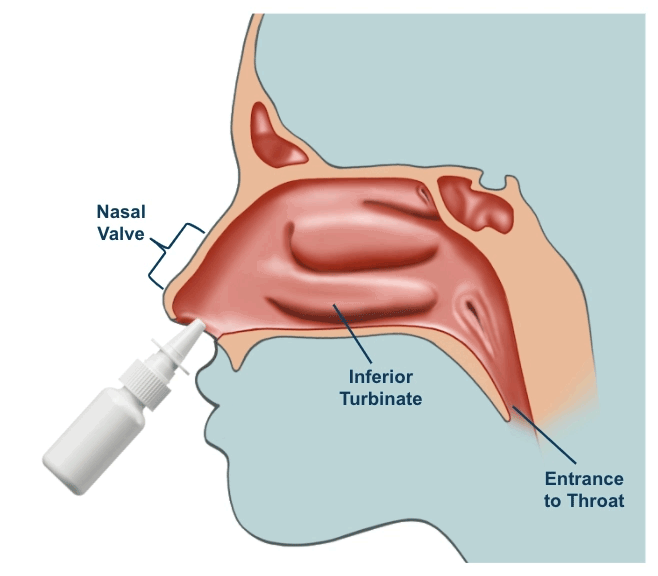STANDARD NASAL SPRAYS DO NOT REACH THE TARGET
Most intranasal drug delivery methods only reach the front of the nose, or the nasal valve. They rely on distant atomization, nebulization, or other mechanical forces to disperse drug through the tortuous nasal anatomy.1,2,3,4
Alternative treatments include oral medications with systemic side effects, injections by a healthcare professional, or invasive, expensive procedures.5, 6
Nasus Medical has patented a patient administered drug delivery platform to overcome these shortcomings and deliver drug precisely where it needs to go!
References:
1. Rapiejko P, et al. Deposition of intranasal glucocorticoids--preliminary study. Otolaryngol Pol. 2015;69:30-38.
2. Leach CL, et al. Nasal Deposition of HFA-Beclomethasone, Aqueous Fluticasone Propionate and Aqueous Mometasone Furoate in Allergic Rhinitis Patients. J Aerosol Med Pulm Drug Deliv. 2015;28:334-340.
3. Xi J, et al. Visualization and Quantification of Nasal and Olfactory Deposition in a Sectional Adult Nasal Airway Cast. Pharm Res. 2016;33:1527-1541.
4. Djupesland PG, Skretting A. Nasal deposition and clearance in man: comparison of a bidirectional powder device and a traditional liquid spray pump. J Aerosol Med Pulm Drug Deliv. 2012;25:280-289.
5. Hoekman J, et al. The upper nasal space – a novel delivery rout ideal for central nervous system drugs. US Neurology. 2020;16:25-31.
6. Adult Chronic Rhinosinusitis: Definitions, Diagnosis, Epidemiology, and Pathophysiology, Otolaryngology–Head and Neck Surgery. 2003;129:S1–S32.




